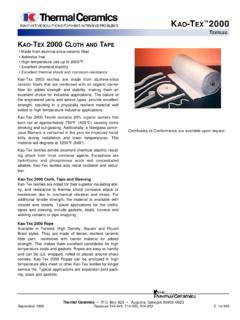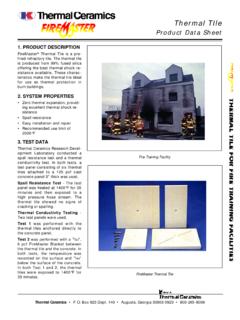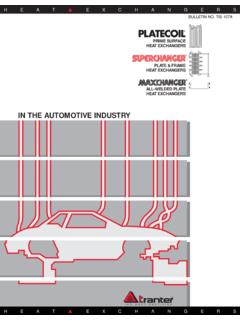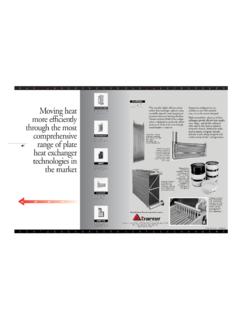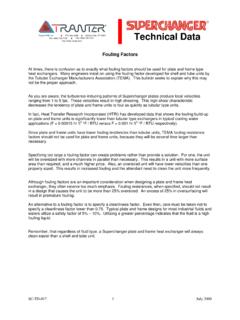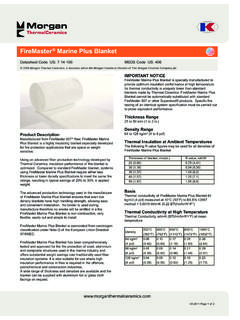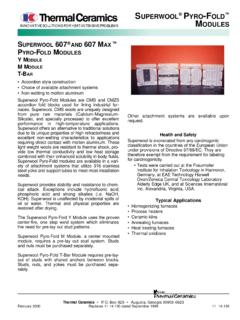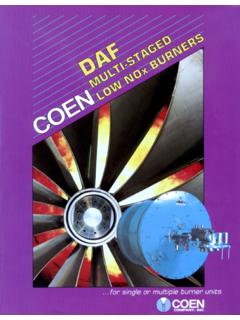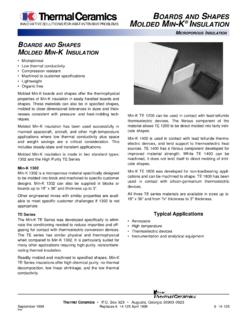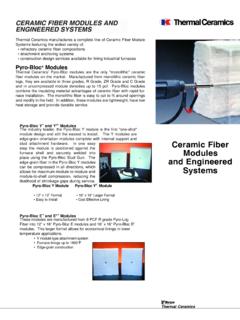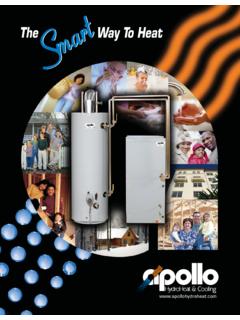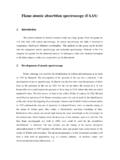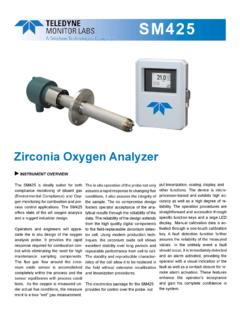Transcription of Experience with High Efficiency, Low Emission Burners to ...
1 Experience with Low Pressure Drop, high efficiency , Low Emission Burners in Power Boilers Vladimir Lifshits - Technical Manager of R&D, COEN Company, Burlingame California Abstract Two front fired power boilers, a 250 MW CE boiler with sixteen Burners and a 75 MW Foster Wheeler boiler with six Burners were retrofitted with new COEN Burners developed for utility applications. The Burners were engineered to meet low air pressure drop, low excess air and low NOx requirements. At the design stage a computational fluid dynamic models representing a portion of ductwork, the wind boxes and Burners were set up to in order to evaluate the uniformity of air distribution between the Burners .
2 When firing natural gas the flame in both boilers was quite different compared with the original Burners . Low flame emissivity - high transparency caused initial difficulties with high temperature in the super heater. In the 250 MW boiler with the Burners arranged in a four by four array the problem was overcome with fuel biasing between the levels. At the same time low excess air operation, down to O2 in the flue gas, with practically no carbon monoxide emissions and NOx emissions of 330 ppm, corr. to 3% O2 dry, at high fire were achieved. That also resulted in the increased overall efficiency of the system and power savings on the combustion air fans.
3 In order to achieve low excess air, opacity and NOx when firing residual oil, a series of tests was conducted with different atomizer cap configurations. With the final components 12% opacity achieved, while firing with the excess oxygen level as low as NOx emissions at high fire were 320 ppm. Due to the low burner air pressure drop and high fuel pressure available, the Burners could operate much higher the design capacity. Full boiler load could be easily carried by 14 Burners . This, coupled with the ability to operate simultaneously on gas and oil, efficient individual burner air shut off dampers, and easiness of light off, greatly increased operational flexibility of the boiler.
4 The 75 MW boiler had only two levels of Burners and the boiler depth was 25% more than the depth of the 250 MW unit, while the distance for mixing over the upper burner level was much shorter. With this geometry the ability to bias gas with overall low excess air was reduced, yet good overall performance was achieved The excess oxygen was well below on both fuels and NOx emissions were 270 ppm (corr. to 3% O2 dry) on gas as well as on oil. Introduction 2In 1996 COEN company supplied 16 newly developed Burners for a 250 MW front fired CE boiler. The Burners were capable of firing natural gas and residual oil and were installed while the plant undergone overall retrofit.
5 The Burners positioned in four rows of four with 8 ft spacing in vertical and horizontal directions. The depth of the radiant section was only 24 ft, the width was 45 ft and the and the height from the hopper to the nose was 40 ft. The combustion air is supplied by two individually controlled fans feeding the air into a symmetrically designed ducting that has a bypass section between the fans. The wind box is sectioned on four compartments with each supplying air to four Burners - two over two. The boiler operates with positive furnace pressure without an induced draft fan. The air is preheated to about 480 deg F in two Lungstrom type air heaters.
6 The boiler is also equipped with a flue gas recirculation (FGR) installed through the hopper. The original Burners had to be replaced due to corrosion damage, lack of performance and numerous other problems. With the old Burners the operation had to be with a relatively high excess air, about 3% of oxygen in the stack when firing either gas or #6 Oil. high amount of water was also injected into the super heater. When firing #6 Oil fame was often impinging on the back wall creating concerns for the longevity of the water tubes. There were also problems with flame stability especially during the operation with FGR at reduced loads.
7 The flow of FGR coming up through the openings in the hopper was interfering with the flames of low level Burners . Difficulties with flame scanning, burner light off and inability to properly isolate the Burners when putting them out of service created additional problems for the operational personnel. These problems were interfering with plant operation in light of frequent demands from the dispatcher to switch the fuels and modulate load. In the process of retrofit the boiler was equipped with new state of the art controls, burner management system and a continuous Emission monitoring (CEM) equipment.
8 The CEM was showing instantaneous NOx and opacity in the stack and the excess oxygen upstream of the air heaters. To reduce the impact of FGR on the lower burner flames the plant decided to equip the boiler with specially designed shields made out of a heat resistant alloy. The function of these shields at the hopper was to deflected the flow of FGR toward the rear wall of the boiler and away from the flames. The requirements for the new Burners included low excess, low NOx and low CO emissions . Another major requirement derived from the need to improve operational flexibility was the ability to maintain full load and performance with only 14 Burners in service without any changes to the air supply system.
9 To achieve this the Burners had to be designed with a pressure drop below 125 mm of water column while firing on average 165 MMBtu/hr on Natural Gas and 157 MMBtu/hr on Oil. This was a challenge to the burner vendors as the maximum burner throat opening between the water tubes in the boiler front wall was limited to 32 inches. In other words, the hydraulic resistance of the burner needed to be about 10% lower than of an unobstructed opening of 32 inches in diameter. 2 3 An extensive combustion optimization work followed the completion of construction and was based on extensive data gathering at different operating conditions.
10 It included Natural Gas firing with non uniformed fuel distribution between the burner levels (biased firing), #6 Oil firing with differently drilled oil gun caps, combination firing with some Burners firing gas and others firing oil. The criteria for optimization were maximizing the overall system efficiency while meeting the Emission requirements. When firing #6 Oil, the flame shape was also a limiting factor, as flame impingement onto the tube walls should be avoided. At each regime, the scope of data, besides those available from the control room, included traverse sampling of the boiler flue gas for oxygen, carbon monoxide and NOx at two locations: upstream of the economizer and downstream of the air heater.
